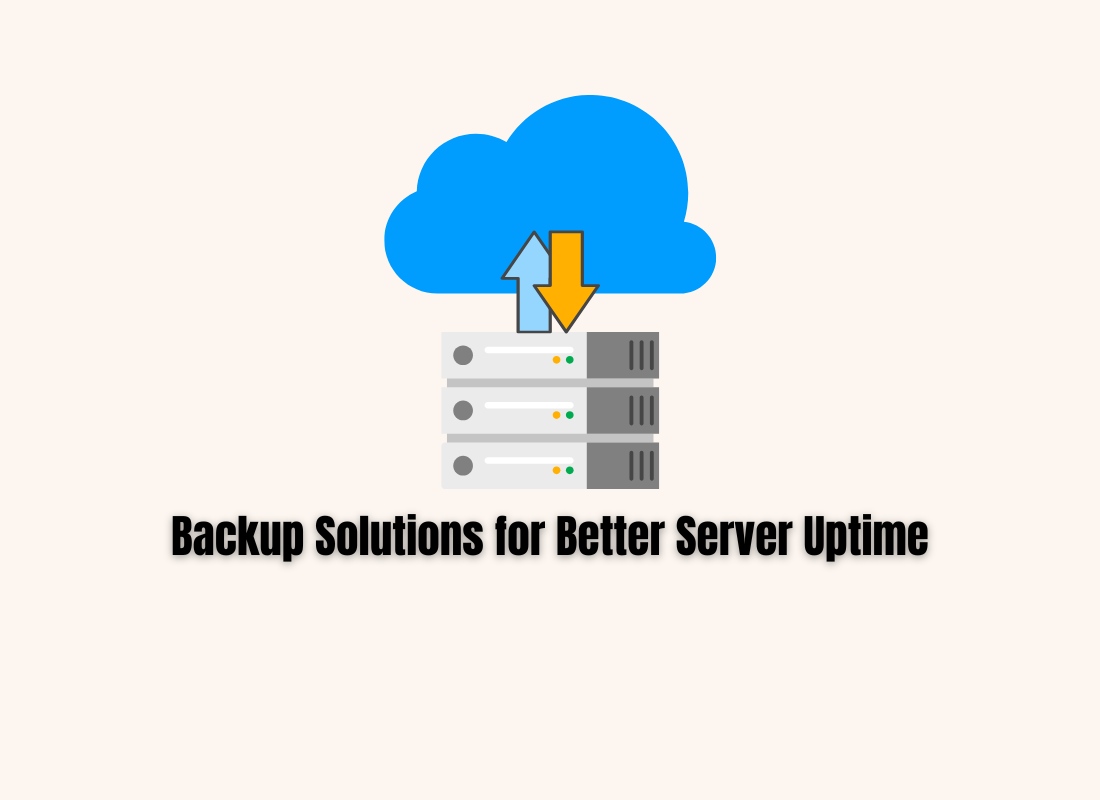
Navigating Redundancies and Backup Solutions for Better Server Uptime
In the dynamic landscape of web hosting, ensuring high server uptime is paramount for businesses, organizations, and individuals reliant on their online presence. Downtime can result in lost revenue, decreased productivity, and damage to reputation, highlighting the importance of implementing redundancies and backup solutions to minimize the risk of service interruptions. In this article, we’ll explore the concept of redundancies and backup solutions and how they contribute to better server uptime in web hosting environments.
Understanding Redundancies:
Redundancies refer to the duplication of critical components or systems within a hosting infrastructure to ensure continuous operation and mitigate the impact of hardware failures, network outages, or other disruptions. Redundancies are implemented at various levels of the hosting stack, including hardware, networking, and data centers, to maximize reliability and availability.
Types of Redundancies:
1. Hardware Redundancy: Hardware redundancy involves deploying duplicate or redundant hardware components, such as servers, storage devices, power supplies, and network switches, to eliminate single points of failure and minimize downtime in the event of hardware failures. Redundant hardware components are often configured in high-availability clusters or failover configurations to ensure seamless failover and continuous service availability.
2. Network Redundancy: Network redundancy ensures reliable and resilient network connectivity by implementing redundant network paths, switches, and routers to prevent network congestion, bottlenecks, or failures. Providers use multiple network links and diverse routes to ensure continuous connectivity. Redundant ISPs help maintain traffic flow during outages. This approach ensures efficient routing and minimal disruptions.
3. Data Center Redundancy: Data center redundancy involves deploying redundant data centers or facilities in geographically diverse locations to ensure business continuity and disaster recovery. Redundant data centers offer failover, data replication, and backup infrastructure. They minimize the impact of failures, disasters, or outages. This ensures service availability even during catastrophic events.
Implementing Backup Solutions:
Backup solutions play a crucial role in safeguarding data and ensuring data integrity and availability in the event of data loss, corruption, or accidental deletion. Backup solutions involve regularly saving critical data and files. They store backups in secondary or offsite locations. This ensures safekeeping and easy recovery when needed.
Types of Backup Solutions:
1. Regular Data Backups: Regular data backups involve scheduled backups of website files, databases, and configurations to secondary storage or backup servers. Backups are performed regularly using incremental, differential, or full methods. These ensure data consistency and integrity by capturing changes.
2. Offsite Backup Storage: Offsite backup storage involves storing backup copies of data and files in geographically distant locations or cloud-based storage platforms. Offsite backups protect against localized disasters like fires or theft. They ensure data availability and continuity during emergencies.
3. Automated Backup Solutions: Automated backup solutions automate the backup process, eliminating the need for manual intervention and ensuring consistent and reliable backups. Backup schedules, retention policies, and recovery procedures are automated. This reduces human error and ensures data availability and recoverability.
Benefits of Redundancies and Backup Solutions:
1. Improved Reliability and Availability: Redundancies and backup solutions improve hosting reliability and availability. They minimize risks of service interruptions and downtime. These measures protect against hardware failures, network outages, and disruptions. Ensuring continuous service and data integrity.
2. Enhanced Disaster Recovery: Redundancies and backup solutions enable effective disaster recovery. They provide failover capabilities and data replication. These solutions help recover quickly from data corruption or catastrophic events. Ensuring minimal disruption and data integrity.
3. Business Continuity: Redundancies and backup solutions ensure business continuity. They maintain service availability, data integrity, and efficiency. This protects against unforeseen challenges and emergencies.
Conclusion:
In conclusion, navigating redundancies and backup solutions is essential for achieving better server uptime and ensuring the reliability, availability, and integrity of web hosting environments. Implementing redundancies and robust backup solutions minimizes service interruptions and data loss. These measures reduce downtime and ensure continuous operation. Businesses can maintain smooth operations even during disruptions. This safeguards overall business continuity. As the digital landscape continues to evolve, investing in redundancies and backup solutions remains a critical component of effective risk management and disaster preparedness for web hosting providers and their customers alike.







